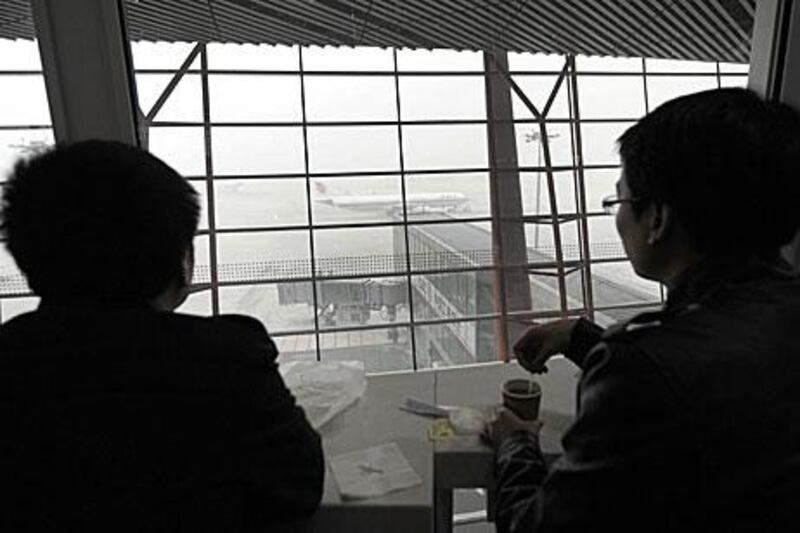BEIJING // It is not enough that China and the US are at odds over Beijing's military buildup or control of the South China Sea.
Now, they are clashing over the extent of air pollution in the Chinese capital.
With heavy smog blanketing Beijing this week, causing hundreds of flights to be cancelled, the US embassy's online pollution monitor went off the charts.
Registering a figure above the maximum of 500, on a scale where anything between 300 and 500 is categorised as "hazardous", the reading contradicted the verdict of the Beijing authorities that the pollution was "moderate".
According to the municipal environmental protection bureau, about three days out of four this year have been "blue sky days", despite the capital experiencing smog-free days only a few times each month.
The mismatch between official data and that published by the US embassy, which is available on Twitter and at http://iphone.bjair.info/, has fuelled angry online posts over the pollution.
"The [US embassy] data really mobilises more public awareness of this issue," said Jhou Rong, a climate and energy campaigner for Greenpeace in China. "They have quite different results from China's official data, which is according to very old standards. It really makes people frustrated."
According to a US diplomatic cable published by WikiLeaks, the Chinese government asked //WHEN?// the US authorities not to keep publishing pollution readings, but the data is still available.
It is based upon levels of pm2.5s, or particulate matter 2.5 micrometres or less in diameter. These are among the most harmful pollutants because some can enter the bloodstream via the lungs, increasing the risk of arterial disease that can lead to heart attacks.
Tiny particulates from power plants, factories, coal-based heating and vehicle exhausts also increase lung cancer rates.
Government pollution statistics do not specify pm2.5 readings, but instead include measurements of larger particulates that are less harmful. The Chinese authorities have promised to begin publishing pm2.5 data by 2016, while the Chinese Academy for Environmental Planning has set a modest target of a 10 per cent reduction in particulate pollution by 2015 in Beijing and other areas.
This is despite average pm2.5 levels being many times higher than levels considered safe.
State-run newspapers are beginning to pressure the authorities to take tougher action, with the Global Times this week warning the debate about pollution was "a matter of government credibility".
Some Chinese people accept the pollution as a part of life.
Zhang Lijia, 47, an author from Nanjing who has lived in Beijing for 15 years, said: "It never bothers me. I grew up in China, I don't pay any attention to it. I want to see a blue sky but if it's not I just get on with my life. If it's foggy, it's foggy."
Elina Lin, 25, who works in the media, said "the pollution is everywhere, not just in Beijing", so there was little point in leaving the city. "Maybe we can live here and they will reduce the pollution," she said. "We are Chinese. This is my hometown."
For some expatriates, the high pollution levels are enough of a reason to consider leaving Beijing.
Patricia Conceicao, 24, is returning to her home country of Portugal after completing a master's degree but said, as a Chinese speaker, she would prefer to stay.
"I have more headaches when the smog is stronger," she said. "If it wasn't for the pollution I would stay because you have a lot of job opportunities. I will only come back if I have a really good job."
While the most severe pollution episodes in Beijing gain publicity, the capital is not the only city grappling with the problem.
Smog is an issue faced by most urban areas in China, including Shanghai, Guangzhou and Hong Kong.
Urumqi, the capital of the Xinjiang province in far-west China, is one of the country's most polluted cities.
On cross-country train journeys, there may be a haze of pollution visible for much or all of the trip.
"The important thing for the environmental protection ... is to do something about it and seriously do something about it," said Wong Tzewai, a specialist on the effects of air pollution at the City University of Hong Kong's Centre for Occupational and Environmental Health Studies.
"The crux of the matter is not whether they measure pm2.5 or not. Really they should do something to bring down the particulates."






